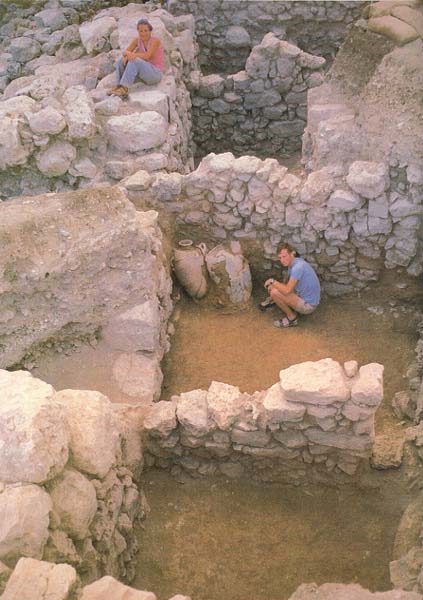Image Details

Moshe Weinberg, Michal Roche-Ben Ami and Israel Finkelstein
Cheek to jowl with a segment of the city fortification wall lies a row of Middle Bronze IIC (1650–1550 B.C.) storage rooms in Area F along the edge of the mound. A worker perches on the city fortification wall, seen as a continuous wall of large stones along the left edge of the picture. Interior walls constructed with smaller stones than those used in the city wall separate the individual storage rooms, right. To the right and perpendicular to the interior dividing walls ran another wall, on the other side of which was dirt and stone fill, making the rooms a kind of basement. The entire row of rooms built against the city fortification wall extended in a band 350 feet along the north perimeter of the tell. In all, 13 such rooms have been discovered in Areas F–H (see plan.)
Most of the rooms in this band adjacent to the city wall served as storage areas. Still leaning in the corner of one of the rooms, two large pithoi, or storage jars, were found cracked, but virtually intact—their shattered sides held in place by the adhesive of hardened earth that filled them. Devoid of domestic vessels, these rooms contained ceremonial artifacts such as those seen here and in other illustrations in this article.
